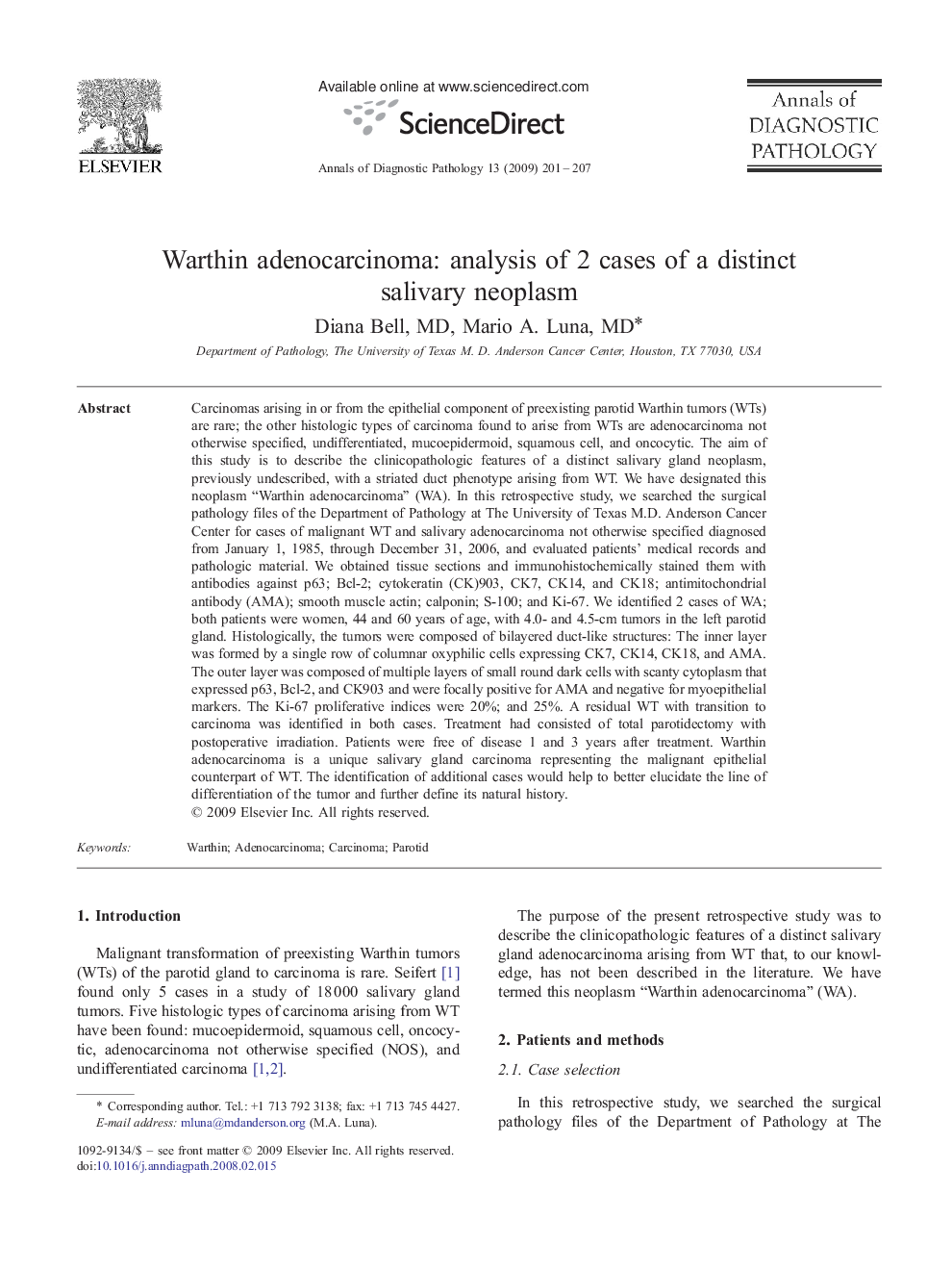| Article ID | Journal | Published Year | Pages | File Type |
|---|---|---|---|---|
| 4130354 | Annals of Diagnostic Pathology | 2009 | 7 Pages |
Carcinomas arising in or from the epithelial component of preexisting parotid Warthin tumors (WTs) are rare; the other histologic types of carcinoma found to arise from WTs are adenocarcinoma not otherwise specified, undifferentiated, mucoepidermoid, squamous cell, and oncocytic. The aim of this study is to describe the clinicopathologic features of a distinct salivary gland neoplasm, previously undescribed, with a striated duct phenotype arising from WT. We have designated this neoplasm “Warthin adenocarcinoma” (WA). In this retrospective study, we searched the surgical pathology files of the Department of Pathology at The University of Texas M.D. Anderson Cancer Center for cases of malignant WT and salivary adenocarcinoma not otherwise specified diagnosed from January 1, 1985, through December 31, 2006, and evaluated patients' medical records and pathologic material. We obtained tissue sections and immunohistochemically stained them with antibodies against p63; Bcl-2; cytokeratin (CK)903, CK7, CK14, and CK18; antimitochondrial antibody (AMA); smooth muscle actin; calponin; S-100; and Ki-67. We identified 2 cases of WA; both patients were women, 44 and 60 years of age, with 4.0- and 4.5-cm tumors in the left parotid gland. Histologically, the tumors were composed of bilayered duct-like structures: The inner layer was formed by a single row of columnar oxyphilic cells expressing CK7, CK14, CK18, and AMA. The outer layer was composed of multiple layers of small round dark cells with scanty cytoplasm that expressed p63, Bcl-2, and CK903 and were focally positive for AMA and negative for myoepithelial markers. The Ki-67 proliferative indices were 20%; and 25%. A residual WT with transition to carcinoma was identified in both cases. Treatment had consisted of total parotidectomy with postoperative irradiation. Patients were free of disease 1 and 3 years after treatment. Warthin adenocarcinoma is a unique salivary gland carcinoma representing the malignant epithelial counterpart of WT. The identification of additional cases would help to better elucidate the line of differentiation of the tumor and further define its natural history.
